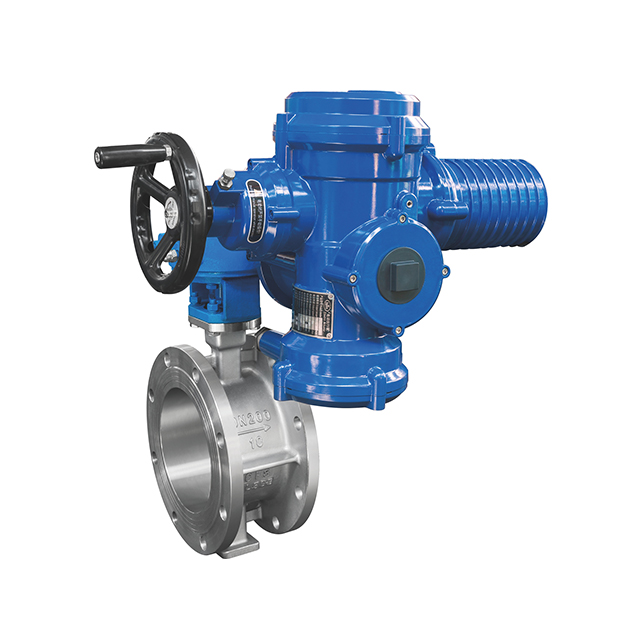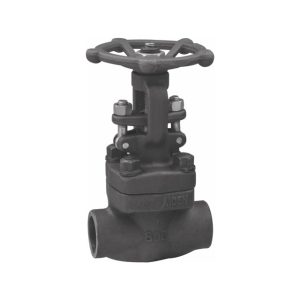Table of Contents
ToggleYou can determine whether the butterfly valve is open or closed by looking at its handle.
These valves come in different styles, with concentric or eccentric discs and a wide range of performance.
In some cases, they have high-performance features. Here are some common types of butterfly valves.
If you have a question about how to determine whether a butterfly valve is open or closed, read on.
What to Know About Butterfly Valves
Butterfly valves are recognized for their minimal maintenance needs, attributed to fewer internal components that reduce the risk of fluid or debris entrapment.
Their straightforward installation involves clamping between adjacent pipe flanges, omitting the need for complex welding or other intricate procedures.
To uphold butterfly valve performance, essential practices include lubricating mechanical components, inspecting and repairing actuators, and cleaning all parts using a silicon-based lubricant.
Regular scrutiny of actuators is vital to spot signs of wear or any loose electrical, pneumatic, or hydraulic connections that might impact valve operation.
During use, common issues with butterfly valves encompass sealing surface leakage due to debris on the valve plate, incorrect closing positions, uneven force, or loose bolts on mounting flanges, and misalignment of the pressure test direction with the medium flow direction.
Addressing these concerns involves eliminating impurities, adjusting the valve plate position, ensuring even force on mounting flange bolts, and aligning the pressure test direction with the medium flow direction.
Determining the status of a butterfly valve (open or closed) is conveniently done by checking the handle position.
A parallel handle indicates a closed valve, while a perpendicular handle signifies an open valve.
If a butterfly valve fails to seat correctly, there is a risk of incomplete closure. In such instances, it becomes crucial to examine the valve’s disc for score marks, indicative of improper seating.
Common Types of Butterfly Valves
Butterfly valves, crucial components in fluid control systems, come in various types, each crafted for specific applications.
Let’s delve into the distinct features of these common types, providing insights to help you navigate the selection process based on your unique operational needs.
Wafer Butterfly Valve
Positioned between pipe flanges, the wafer butterfly valve boasts easy installation, but it’s not ideal for isolation purposes.
Characterized by its lightweight and cost-effectiveness, this valve finds its niche in applications within the food, beverage, and pharmaceutical industries.
Lug Butterfly Valve
Similar to the wafer type, the lug butterfly valve introduces protruding lugs for convenient installation and removal.
While offering similarities to the wafer variant, it may come with lower bolt torque ratings, emphasizing its adaptability for specific use cases.
Flanged Butterfly Valve
Versatile in various piping connection techniques, flanged butterfly valves feature elevated or winged edges, allowing secure fastening between two pipes.
Often deployed in large-sized applications, these valves showcase adaptability across different piping configurations.
Rubber-Lined, Plastic-Lined, and Metal Butterfly Valves
These categories cater to diverse demands. Rubber-lined valves, cost-effective and suitable for non-demanding applications, excel in non-abrasive and lower-temperature environments.
Plastic-lined valves find their role in handling harsh chemicals, ultrapure applications, and sanitary purposes.
Meanwhile, metal butterfly valves thrive in high-temperature or abrasive conditions.
Zero, Double, and Triple Offset Butterfly Valves
Distinguished by disc offset, these valves cater to applications requiring specific features. Zero offset valves, the most common, provide reliable performance.
Double and triple offset valves shine in scenarios demanding tight shutoff and quarter-turn actuation, showcasing enhanced precision.
Butt Welded Butterfly Valve
Reserved for very high-pressure applications, the butt-welded butterfly valve stands out, although it is rarely paired with plastic-lined valves.
Its specialized design and application suitability make it a choice for environments where robust performance under extreme pressures is paramount.
Understanding the unique attributes of each type equips decision-makers with the knowledge needed to choose the optimal butterfly valve for their specific operational contexts.
Is Butterfly Valve Open or Closed?
When installing a butterfly valve, check to see that it is installed properly.
If the seating is not seated correctly, the valve will not close completely. Check the valve’s disc to see if it has score marks.
If the discs are too worn, they may not have been properly fitted. In this case, open the valve about ten degrees. This will allow for high-velocity flushing action.
Butterfly valves come in a wide variety of styles and materials. While some are suited for liquids and gases, others are suited for grit, sand, or other solids.
Different butterfly valve designs are designed to handle different materials, and their leakage limits may vary as well.
To understand what type of butterfly valve you need, read more about the types available. You can also learn about how to identify if your butterfly valve is open or closed.
How to Open and Close a Butterfly Valve?
Before installing your Butterfly valve, make sure the flanges and pipelines are clean.
Also, remember that it’s important to regularly apply grease to butterfly valves, as they are constantly in contact with fluids.
Apply grease to the butterfly valve’s grease fitting at regular intervals to prevent rust and corrosion. Ideally, use lithium-based grease.
Before you install your Butterfly valve, make sure the flanges are spread wide, and the pipe work is aligned properly.
Butterfly valves have a horizontal stem to allow debris to pass by. This design is important as solids can lodge under the disc at the spindle and damage the seal.
To prevent this from happening, the disc should lift away from solids on the upstream side of the valve.
Butterfly valves cannot be pigged, which is when a pig is used to open or close a butterfly valve.
Butterfly valves are also used in automobile systems. Most of us have probably seen them in a car’s carburetor, where they regulate the airflow.
They are often partially open to regulating the flow of air in and out of a car’s engine. The open and closed positions are regulated by the butterfly valve’s disc.
If the pressure is higher than the set value, the butterfly valve will open. When the pressure drops below the set value, the butterfly valve closes.
To open or close a butterfly valve, turn the handle of the valve a quarter turn. This causes the disc to move from perpendicular to the flow of media to the parallel position.
The disc also moves away from the seat and toward the centerline of the valve. When closed, the valve’s soft seat wedges against the disc.
Different types of butterfly valves are defined by the disc configuration and the type of end connections.
Common Causes of a Butterfly Valve Not Closing Completely
Common reasons for a butterfly valve failing to close entirely can be attributed to various factors, such as the following:
Improper Installation
If not installed correctly during commissioning, the valve may leak at the sealing surface, have an incorrect plate position, or have uneven force on flange bolts.
Inadequate installation during commissioning can lead to sealing surface leakage, incorrect valve plate position, or uneven force on mounting flange bolts.
Worn or Corroded Bearings
Over time, the valve’s bearings can wear or corrode, affecting its overall performance.
The bearings in the valve may become worn or corroded with time, impacting the valve’s functionality.
Damaged or Worn Rubber Elastomer
The rubber elastomer in high-performance butterfly valves tends to wear out, tear, perforate, or detach over extended use, causing valve malfunctions.
The rubber elastomer, a critical component, may tear, wear out, perforate, or detach after prolonged usage, leading to a valve malfunction.
Sealing Surface Issues
Debris on the valve plate or sealing surface, or an incorrect closing position, can result in surface leakage.
Issues like debris on the valve plate, sealing surface, or an incorrect closing position can cause sealing surface leakage.
Valve Design
Sometimes, the valve design itself may cause instability or a lack of control response, impacting the valve’s ability to close entirely.
In certain instances, the valve design may contribute to instability or a deficient control response, affecting complete closure.
Addressing these issues necessitates proper installation, regular maintenance, and the timely replacement of worn or damaged components.
How to Maintain a Butterfly Valve to Prevent it From Not Closing Completely
To keep a butterfly valve in top-notch condition and ensure it closes completely, consider the following steps:
Lubrication
Apply lithium-based grease regularly to prevent rust and corrosion, ensuring the valve operates smoothly and can fully close.
Regularly applying recommended lithium-based grease minimizes rusting and corrosion, promoting smooth valve operation and preventing issues that might hinder complete closure.
Proper Installation
During installation, ensure the butterfly disc is open to avoid damage. Check that bolts are the right size and align with valve and flange holes for secure installation.
Proper installation involves ensuring the butterfly disc is open during installation to prevent damage.
Confirming correct bolt sizes and alignment with valve and flange holes is crucial for secure installation.
Regular Inspection
Check the valve’s disc for score marks during regular inspections, as these may indicate improper seating, potentially preventing full closure.
Periodic inspections should include checking the valve’s disc for score marks, indicating potential seating issues that might hinder complete closure.
Testing and Adjustment
Regularly test the valve’s operation, ensuring the disc doesn’t catch and the actuator is properly connected and adjusted.
Check the effectiveness of the valve stem and make adjustments as needed.
Conducting regular tests ensures proper valve operation, preventing issues like disc catching or improper actuator connection.
Monitoring the effectiveness of the valve stem and making adjustments is vital.
By adhering to these maintenance practices, you can keep the butterfly valve in optimal condition, minimizing the risk of it not closing completely.
How Often Should Butterfly Valves Be Inspected for Maintenance
Regular maintenance inspections of butterfly valves, at a minimum of once a year, are crucial to ensure optimal functionality, extend their lifespan, and prevent issues arising from routine use.
Certain conditions, such as high-pressure environments, highly corrosive fluids, or critical applications where valve failure poses severe risks, may necessitate more frequent inspections.
The frequency is also influenced by industry-specific regulations and manufacturer recommendations.
Regular inspections serve to identify potential problems early, avoiding the need for expensive repairs or replacements.
Additionally, consistent visual inspections, lubrication, cleaning, seal replacement, actuator maintenance, torque verification, and alignment contribute to the prolonged durability and high endurance of butterfly valves, ensuring their optimal working condition over time.
Key Takeaway
It is important to install the valve correctly to avoid leakage. That means you need to find a butterfly valve manufacturer, like Xintai.
If it is not installed correctly, the valve could leak, which can cause huge losses. The good news is that butterfly valve leakage is typically easy to fix.
Some leaks, however, require a valve replacement.
Butterfly valves have a lever handle that indicates whether or not the flow is flowing.
Turn the handle partway to open the valve. To close the valve, turn the handle perpendicular to the stem.
If the butterfly valve is closed, the lever must be parallel to the stem. If it is open, it will be horizontal.
When installing a butterfly valve, make sure to keep the stem above the other pipe elements.










